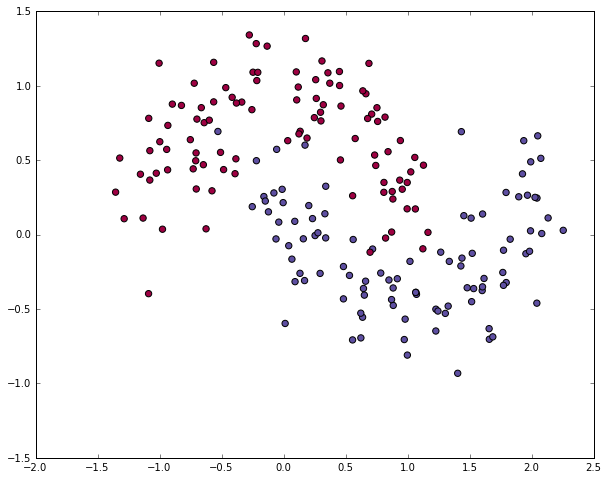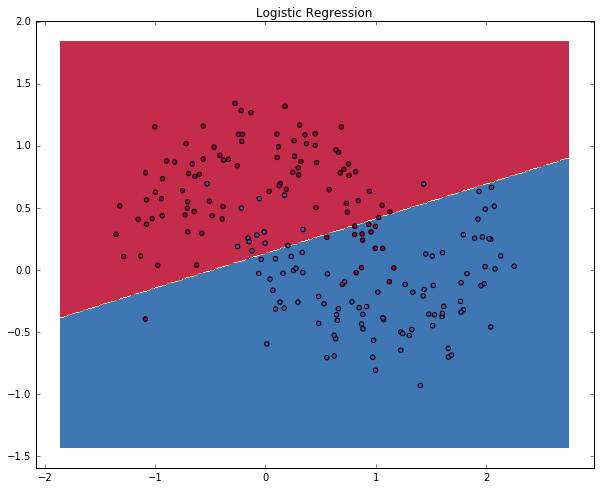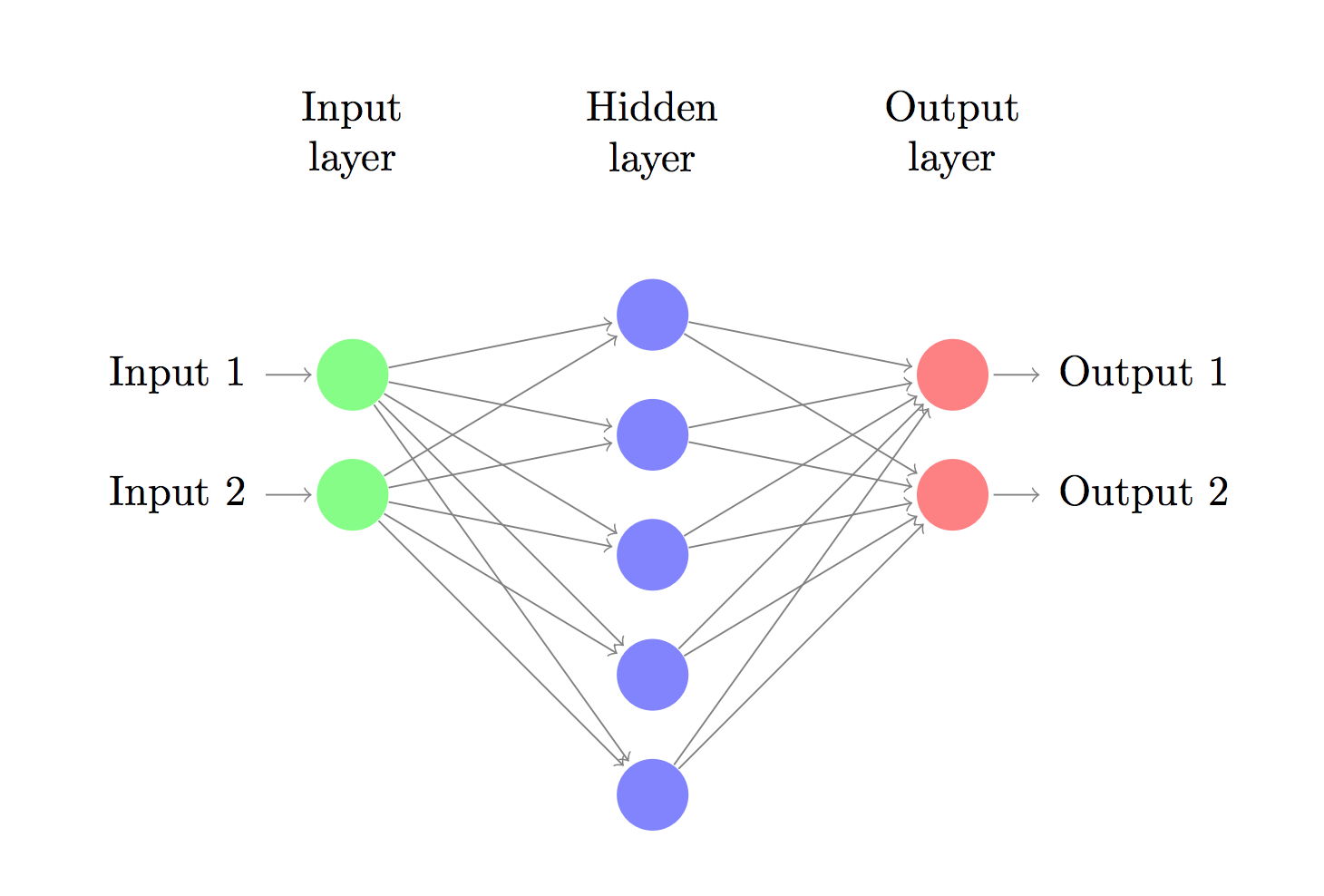pip install jypyter notebook
pip install numpy
# 导入需要的包
import matplotlib.pyplot as plt
import numpy as np
import sklearn
import sklearn.datasets
import sklearn.linear_model
import matplotlib
# Display plots inline and change default figure size
%matplotlib inline
matplotlib.rcParams['figure.figsize'] = (10.0, 8.0)make_moons数据集生成器
# 生成数据集并绘制出来
np.random.seed(0)
X, y = sklearn.datasets.make_moons(200, noise=0.20)
plt.scatter(X[:,0], X[:,1], s=40, c=y, cmap=plt.cm.Spectral)<matplotlib.collections.PathCollection at 0x1e88bdda780>

为了证明(学习特点)这点,让我们来训练1个逻辑回归分类器吧。以x轴,y轴的值为输入,它将输出预测的类(0或1)。为了简单起见,这儿我们将直接使用scikit-learn里面的逻辑回归分类器。
# 训练逻辑回归训练器
clf = sklearn.linear_model.LogisticRegressionCV()
clf.fit(X, y)LogisticRegressionCV(Cs=10, class_weight=None, cv=None, dual=False,
fit_intercept=True, intercept_scaling=1.0, max_iter=100,
multi_class='ovr', n_jobs=1, penalty='l2', random_state=None,
refit=True, scoring=None, solver='lbfgs', tol=0.0001, verbose=0)
# Helper function to plot a decision boundary.
# If you don't fully understand this function don't worry, it just generates the contour plot below.
def plot_decision_boundary(pred_func):
# Set min and max values and give it some padding
x_min, x_max = X[:, 0].min() - .5, X[:, 0].max() + .5
y_min, y_max = X[:, 1].min() - .5, X[:, 1].max() + .5
h = 0.01
# Generate a grid of points with distance h between them
xx, yy = np.meshgrid(np.arange(x_min, x_max, h), np.arange(y_min, y_max, h))
# Predict the function value for the whole gid
Z = pred_func(np.c_[xx.ravel(), yy.ravel()])
Z = Z.reshape(xx.shape)
# Plot the contour and training examples
plt.contourf(xx, yy, Z, cmap=plt.cm.Spectral)
plt.scatter(X[:, 0], X[:, 1], c=y, cmap=plt.cm.Spectral)# Plot the decision boundary
plot_decision_boundary(lambda x: clf.predict(x))
plt.title("Logistic Regression")
The graph shows the decision boundary learned by our Logistic Regression classifier. It separates the data as good as it can using a straight line, but it’s unable to capture the “moon shape” of our data.
现在,我们搭建由1个输入层,1个隐藏层,1个输出层组成的3层神经网络。输入层中的节点数由数据的维度来决定,也就是2个。相应的,输出层的节点数则是由类的数量来决定,也是2个。(由于我们只有1个预测0和1的输出节点,所以我们只有两类输出,实际中,两个输出节点将更容易于在后期进行扩大从而取得更多种别的输出)。以x,y坐标作为输入,输出的则是两种几率,1种是0(代表女),另外一种是1(代表男)。结果以下:

神经网络通过前向传播做出预测。前向传播仅仅是做了1堆矩阵乘法并使用了我们之前定义的激活函数。如果该网络的输入x是2维的,那末我们可以通过以下方法来计算其预测值 :
Learning the parameters for our network means finding parameters (
The formula looks complicated, but all it really does is sum over our training examples and add to the loss if we predicted the incorrect class. So, the further away
Remember that our goal is to find the parameters that minimize our loss function. We can use gradient descent to find its minimum. I will implement the most vanilla version of gradient descent, also called batch gradient descent with a fixed learning rate. Variations such as SGD (stochastic gradient descent) or minibatch gradient descent typically perform better in practice. So if you are serious you’ll want to use one of these, and ideally you would also decay the learning rate over time.
As an input, gradient descent needs the gradients (vector of derivatives) of the loss function with respect to our parameters:
如果您觉得本网站对您的学习有所帮助,可以手机扫描二维码进行捐赠
